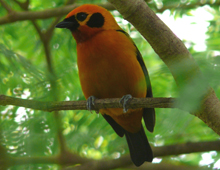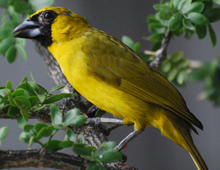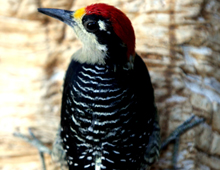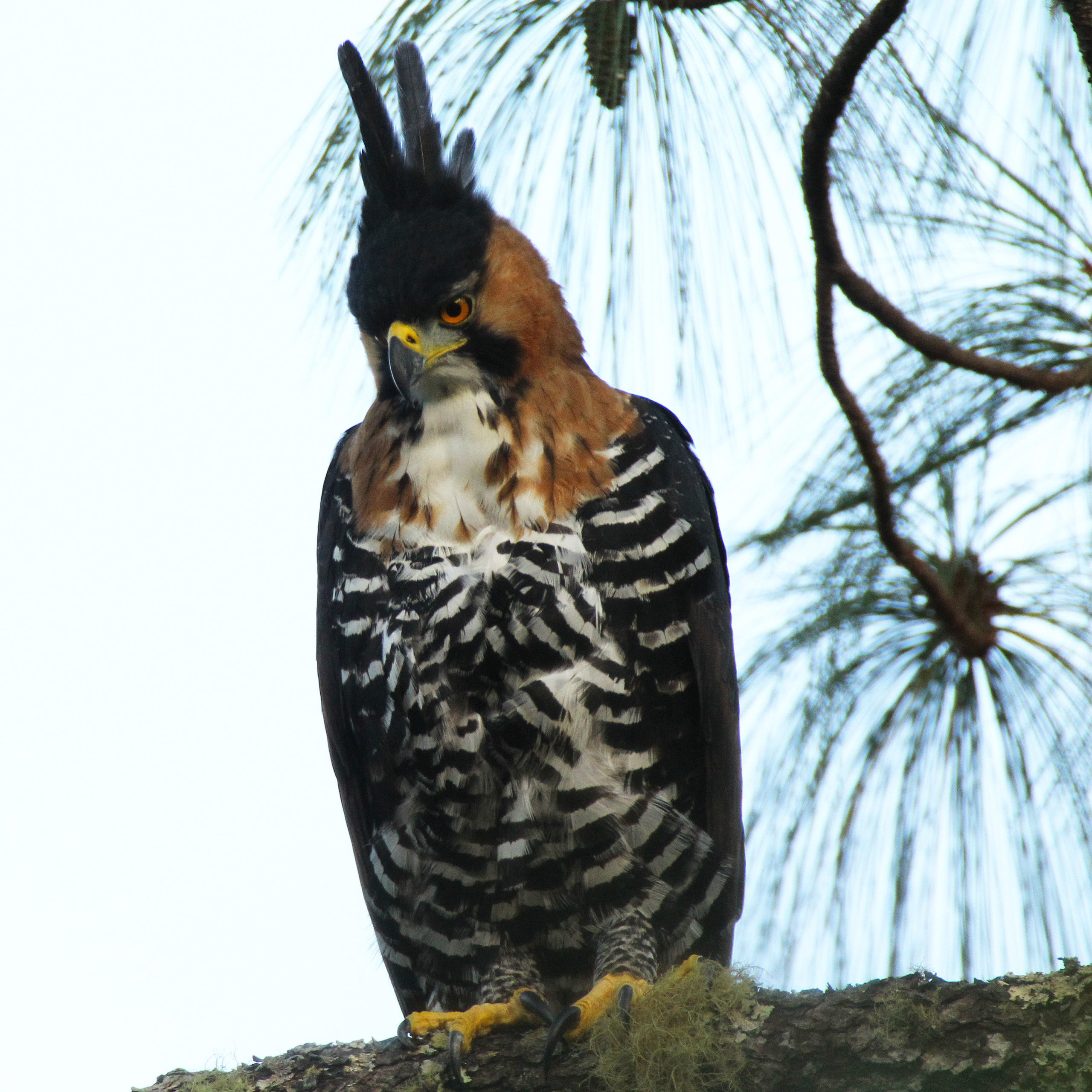Mundo Maya

Violaceous euphonia, Euphonia violacea
With 27 species, the Euphonias comprise another very large genus of Tropical American Birds. They are found from the Mexican State of Sonora, down to Argentina and Bolivia, as well as a number of Caribbean islands. The DWA has exhibited several species. Long considered tanagers, they have been recently reclassified as finches. This species, found over a large area of eastern South America, has been a popular bird in private collections and zoos since the Victorian era. It has bred at the DWA.
LEARN MORE
Bay-headed tanager, Tangara gyrola
This is one of the more widely distributed of the Tangara tanagers, found from Costa Rica south through a large area of South America, including parts of the Andes, Amazonia and Eastern Brazil. It has been an admired cage bird for at least a century, and is one of the more common tanagers in zoos, where it has been bred.
LEARN MORE
Silver-throated tanager, Tangara icterocephala
One of the more northern members of its genus, this species is found from Costa Rica south to Ecuador, following the Andes in its South American Range. The specimens at DWA were collected in Panama. Chicks were raised by their parents in Mundo Maya in 2011.
LEARN MORE
Golden tanager, Tangara arthus
There are at least 47 species of small, jewel-like tanagers in the genus Tangara, making this the largest genus of purely Tropical American birds. The DWA displays more than a dozen, probably the most extensive public exhibit. They are particularly concentrated along the Andes, as is this species, which is found from Venezuela to Bolivia. Although now seldom seen in zoos, it has bred repeatedly in captivity since the 1950s.
LEARN MORE
Yellow-green grosbeak, Caryothraustes canadensis
Carl Linnaeus (1707-1778) invented the scientific names we use today. Many of his names were given to dead specimens in European museums, or pictures in books, so the information he had was sometimes incorrect. The laws of nomenclature do not allow for corrections. Thus, even though this large finch actually comes from Panama and Northern South America, the “Canadian” name that Linneaus gave it in in 1766 is still used. A relative of the Cardinal, Rose-breasted grosbeak, and Painted and Indigo buntings, it has always been rare in captivity.
LEARN MORE
Woodpeckers, Picidae
The 216 species of woodpeckers are found across the Americas, Europe, Asia, and Africa, of which 109 live in Mexico, Central, and South America, and the Caribbean. They are important components of the tropical American ecosystem, as other birds, such as trogons, use the nests they excavate in trees. True to their name, their skulls, beaks and tongues are uniquely adapted to extracting insects from trees. Tropical American woodpeckers are uncommon in zoos, but the DWA has done well with four species: Red-crowned woodpecker (Melanerpes rubricapillus), Puerto Rican woodpecker (Melanerpes portoricensis), Panamanian acorn woodpecker (Melanerpes formicivorus striatipectus) and the Golden-naped woodpecker (Melanerpes chrysauchen).
LEARN MORE
Ornate hawk-eagle, Spizaetus ornatus
This beautiful bird has always been a rare exhibit. The DWA has had unusual success propagating this species. Young birds have white heads. Weighing less than four pounds, it easily takes such large prey as monkeys, curassows, and macaws. Like the Near Threatened Harpy and Crested eagles, they prefer building nests in Ceibas and other huge trees, but are more tolerant of disturbed forest and not yet considered threatened.
LEARN MORE
Blue parrotfish, Scarus coeruleus
Parrotfish are named for their brilliant colors and their beaks, formed by many teeth fused together in a mosaic. Once classified in their own family, the 90 or so species are now considered highly specialized wrasses. They are a vital component of the ecology of coral reefs, pulverizing coral to extract algae and producing vast amounts of sand. Of the fourteen species found off North America, the Blue parrotfish, found widely in the Caribbean, is one of the most recognizable, adult males being solidly blue. Almost all parrotfish begin life as females.
LEARN MORE
Lookdown fish, Selene vomer
Reaching a length of a foot-and-a half and weighing less than five pounds, this is one of the smaller members of the Jack family, which includes such well-known game fishes as the Amberjack, as well as the Yellowtail featured in Sushi bars. Despite its small size, it is considered delicious, like its relative the Pompano. It is found in large schools in the Tropical Atlantic and the Gulf of Mexico and is common along the Texas coast. The peculiar head structure which gives it its name, has made it popular as a public aquarium animal for many years.
LEARN MORE
French angelfish, Pomacanthus paru
Easily growing over a foot in length, this is one of the most popular fishes with divers in the Bahamas, Florida, and other places in the Tropical Atlantic. It is a typical sight in Texas’ Flower Garden Banks sanctuary. While adults are black with golden edging to their scales, juveniles have a pattern of broad yellow bands, which serve a “Barber’s Pole” purpose, since young French angels are “cleaners” of much larger fishes that do not harm them. Adults eat mostly sponges. This has been a favorite aquarium exhibit for more than a century.
LEARN MORE

